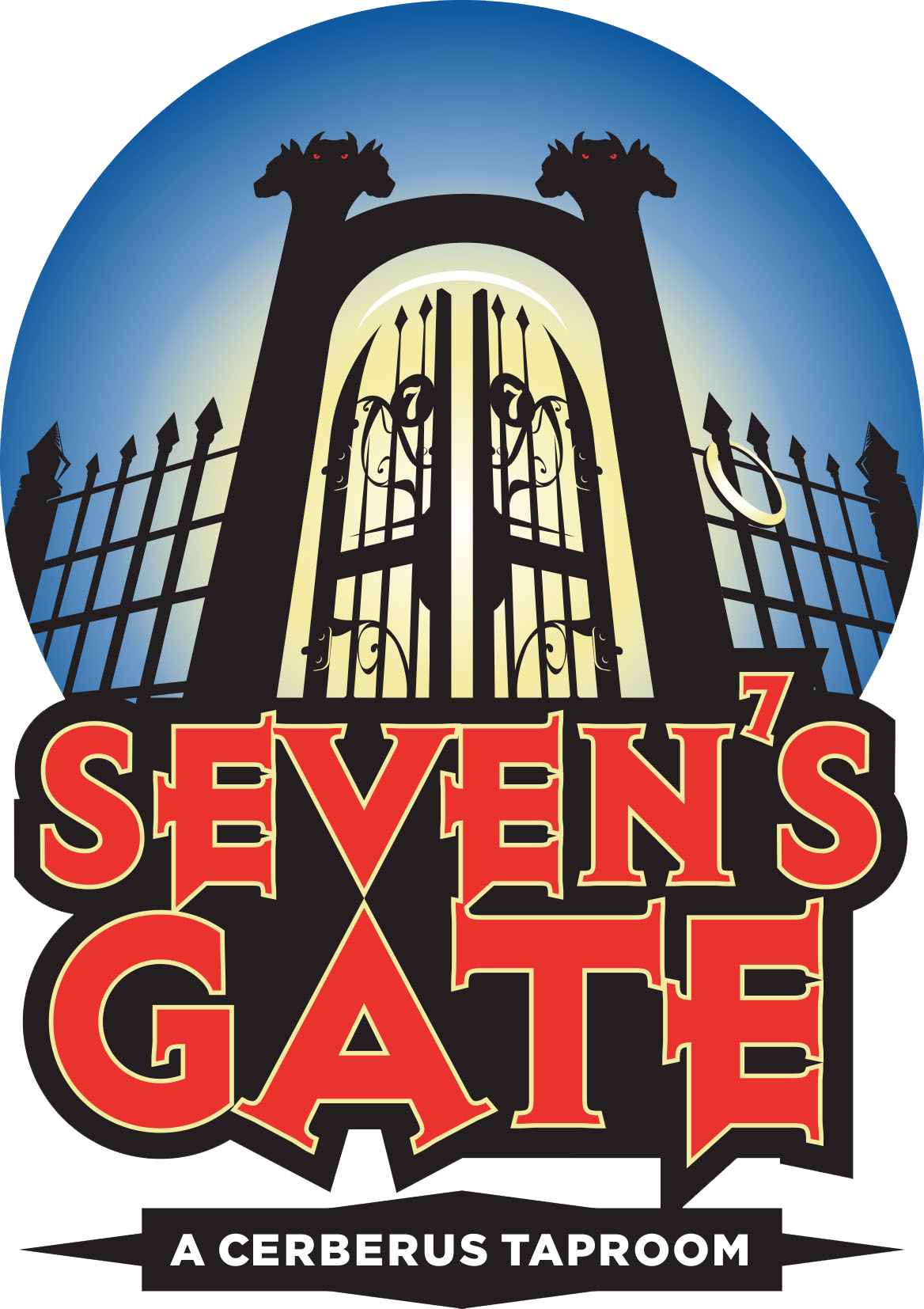On Tuesday, January 16, Bonny & Read Fine Steaks and Seafood came together with Lee Spirits Company to collaborate on a five-course oyster and gin pairing dinner. The unusually progressive approach provides Colorado Springs with something fresh and unexpected to heighten traditional expectations of craft food and beverage combinations.
“We’ve done a lot of different cocktail-dinner pairings before, but we’ve never done one that’s purely seafood-based,” says Josh Kelly, executive chef at Bonny & Read. “One of the things that makes me most proud is bringing fresh oysters and raw bar options to Colorado Springs and [the city] being such a melting pot, it brought out a surprising amount of oyster fanatics.”
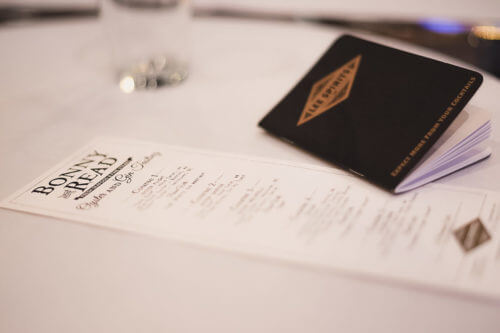
Bonny & Read sells between 500 and 1,000 oysters on the half shell a week and Kelly says he attempts to showcase different varieties from both the Atlantic and the Pacific. The appreciation for the subtle flavors is intensified with the integration of cocktails built on-site by Carlos David Garcia, bartender at Lee Spirits Co. with assistance from Philip Taylor.
“We would come up with a cocktail to pair with the dish, for a specific reason,” says Cole Chapman, brand ambassador at Lee Spirits Co. who presents the luscious and layered drink selections that nicely balances the saltiness from the oysters.
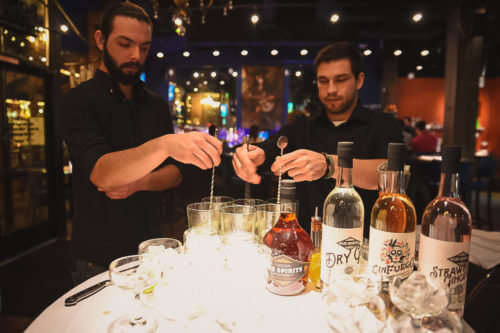
The first course confirms the notion of geographical diversity in an oyster flight with three North American varietals that are consistent in dishes throughout the evening. Although each elicits their own distinct flavors, they all receive a compliment from a classic gin martini with Lee Spirits dry, prohibition-inspired gin.
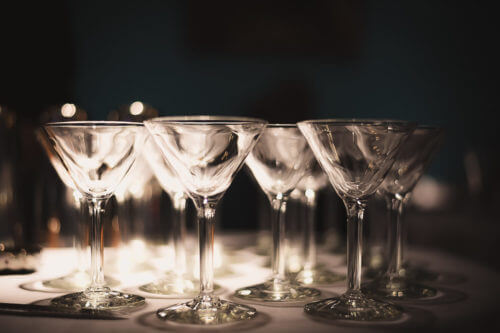
The smallest is a Calm Cove oyster which are found on the West side of Washington’s natural waterway, Hood Canal (which separates Kitsap Peninsula from Olympic Peninsula). These oysters are cultivated inter-tidally, with the ebb and flow of the waves exposing the oysters to both sunlight and fresh air. Hood Canal is rich in nutrients which contributes to a hard outer shell with highly fluted and jagged edges (as a result of rapid growth) with deep cups. They promote accessible earthy, mushroom notes and a faint cucumber finish.
The largest and most recognizable is the Blue Point oyster which is often a broad reference to those harvested in the southern New England coastal region, but originally derives its name from Long Island’s Great South Bay in New York. They are bottom-cultured with a silky texture, crisp oceanic expression and characteristically East Coast brininess.
The Kusshi oyster hails from Vancouver, British Columbia, and translates from Japanese to “precious” or “ultimate.” The oyster is as deep as it is long with a bright purple hue that peaks out from inside the shell. The Kusshi’s are farmed by a tray suspension method and a noticeably meaty texture juxtaposes sweet and salty flavors that finishes with a mild fruitiness that lingers.
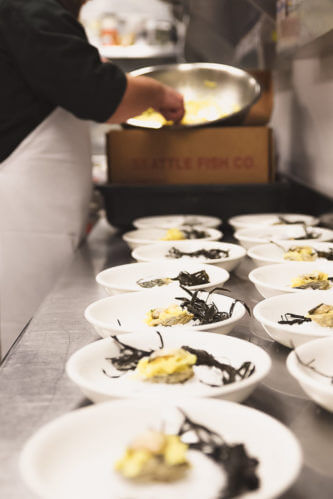
The visual and aromatic elements enhance the presentation of the dish to create an intentional and thoughtful introduction to the evening. “Trying the oysters naked to start gives a pure representation of the quality and oceanic origin,” says Kelly. To further the clean, unadulterated experience a crystal clear, smooth martini clears the palate and we continue to sip on the refreshing cocktail throughout the course of the evening.
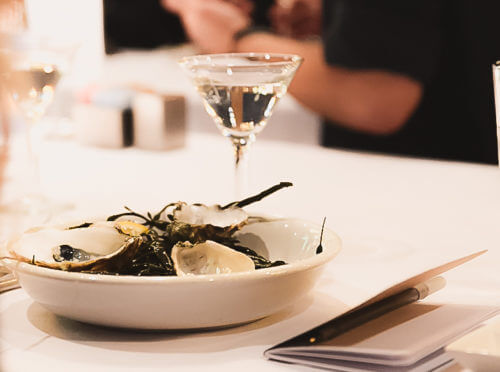
The second course includes ginfuego, Lee Spirits popular, peppery gin infused with spices in a ‘Red Snapper’ (a take on a Bloody Mary that substitutes spirits). The botanicals stand up against the tomato juice with more depth whereas a neutral-spirit, like vodka, goes unnoticed. The cocktail is perfectly portioned in a trumpet flute with a Calm Cove oyster that rests on the mouth of the glass. The saltiness from the shellfish replaces typical pickled vegetables and we opt to drop the oyster shooter down into the drink. A shrimp mousse brioche plays into the concept but ultimately the tiny toast plays third wheel to the already happy marriage of the killer cocktail and oyster duo.
“I wanted it to be interactive,” says Kelly. “Paying homage to grilled cheese and tomato soup.”
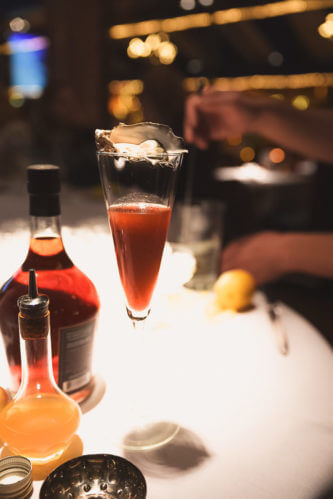
Course three, arguably our favorite, consists of a Kusshi oyster with a small nest of satiating, homemade tagliatelle nestled inside with a lemon beurre blanc and Italian Royal Ossetra caviar on top paired with a floral ‘1896’ cocktail.
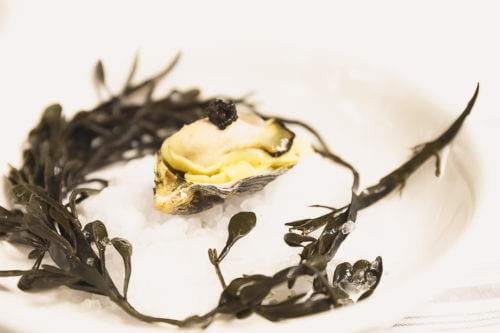
“This drink fully embodies the 1890s,” says Chapman. “In this time period there were really specific cocktails.”
The ‘1896’ is made up of seven components, all of them liquor, but it doesn’t present as overtly spirit forward. “The goal of a cocktail is not to taste like it’s ingredients, but far superior.’” says Chapman. The finished build tastes of fragrant rose water but effectively balances the buttery pasta and nuances from the oyster.
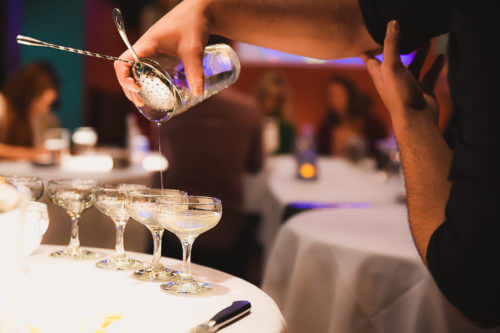
The fourth arrival is a brilliant ceviche, made with a Blue Point oyster, diver scallops, wild-caught Gulf shrimp, Scotch bonnet chili peppers and lime, which creates perfect acidity. The dish pairs with a strawberry ginger gimlet that compliments the course with it’s heightened sweetness but ordinarily we would prefer to see this cocktail lean more towards refreshing.
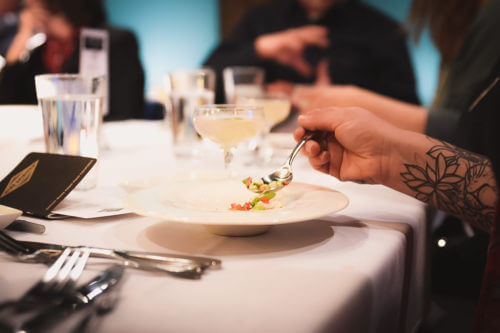
The finale is “Oysters Bonny” and encompasses decadence with fresh Maine lobster, a Calm Cove oyster, potato ribbons and a savory saffron reduction on top of tart greens to pair with a rich Negroni. The crispy starch ringlets adds a crunch to the dish’s velvety disposition and we wish there was even more sauce to dress the remaining salad.

Chef Kelly rounds out the meal with an unexpected dessert course that doesn’t appear as delicious as it tastes. After a spoonful of the pudding-esque treat it immediately reminds us of a deconstructed lemon meringue pie. “Lemon curd anchors the base of the dish,” says Kelly, who adds a topping of refreshing strawberry-ginger gin infused granita, whipped cream and sprinkling of cannoli shell crumbles.
As the event concludes both establishments express an eagerness to provide more creative, synergistic events in Colorado Springs and continue to establish a lane for fresh seafood in our landlocked state. Chef Kelly shares with RMFR that the enthusiastic responsive prompts Bonny & Read to offer more pairing dinners in a similar vein going forward on a monthly basis.
“The five course oyster tasting allowed us to showcase the versatility of the oyster and the culinary talents of our great team,” says Kelly. “When we conceptualized the tasting we wanted to partner with local company that is pushing the food and beverage scene forward, Lee Spirits was the perfect match.”


